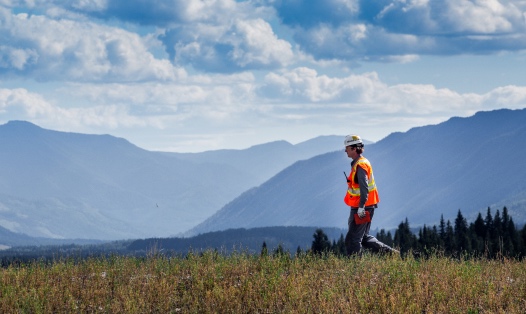In May 2016, the Ktunaxa Nation Council and Teck formally signed a comprehensive Impact Management and Benefits Agreement (IMBA). The IMBA sets out commitments for both parties that will support environmental and cultural stewardship within the Ktunaxa ?amak?is (Ktunaxa Nation Territory), an area which encompasses Teck’s five steelmaking coal operations in southeastern British Columbia. The Ktunaxa-Teck IMBA is one of the most comprehensive agreements of its kind in Canada.
Denine Milner, Manager of Strategic Initiatives, from the Ktunaxa Nation Council and Nic Milligan, Manager, Community & Aboriginal Affairs from Teck discuss the history of the relationship, the importance of the agreement and the expected mutual benefits.
1. Tell us about the relationship between Teck and the Ktunaxa.
- Denine Milner: The Ktunaxa National Council (KNC) and Teck began working together in 2007 with the establishment of a Protocol Agreement and soon after that a Consultation Agreement. With increased activity and proposed mine expansions, KNC and Teck decided to more fully formalize the relationship between the Ktunaxa Nation and Teck and embarked on the comprehensive Impact Management and Benefits Agreement.
- Nic Milligan: The Ktunaxa-Teck relationship dates back many years and has enjoyed a formal framework since the signing of the Working Protocol Agreement in 2007. In simple terms, protocol agreements outline how we would communicate and work together.
From 2009 to 2014, the Ktunaxa and Teck had been intensively working through permitting of Line Creek Phase 2 as well as issues related to water quality in the Elk Valley. This led us to discussions around an IMBA and also Ktunaxa’s significant involvement in the development and implementation of the Elk Valley Water Quality Plan.
While we initially focused on an agreement specific to our Line Creek extension, from the beginning we discussed the merits of an “umbrella agreement” that would include other projects. Very soon, the scope had expanded and from 2012 through 2016 we ended up negotiating a valley-wide agreement that covers all five of our existing mines and is unique in Canada.
2. Why is the impact management and benefits agreement important?
- Denine Milner: The IMBA marks a commitment by the Ktunaxa Nation and Teck to work together. While on the one hand, it is a natural step from the Protocol and Consultation Agreements, it is also a wise agreement in that it fully sets out processes for us to work through a number of issues and topics associated with mining in Qukin–amak–is (the Ktunaxa Traditional district in which Teck operates), as well as more fully enhance the relationship in a positive manner, which can only come as a result of feeling recognized. In this way, the IMBA is a landmark agreement. Our hope is that one day, industry, other governments and other First Nation governments can point to this relationship and say: “Yes, it can work – look what they’re doing.”
- Nic Milligan: The agreement marks an important milestone but the relationship itself is the true measure of success. The IMBA is another step in strengthening the ongoing relationship between Teck and the Ktunaxa. The name, Impact Management and Benefits Agreement, was chosen to highlight the importance of managing impacts in addition to the provision of benefits.
3. What kind of benefits are expected for both parties?
- Denine Milner: Benefits can be characterized in so many different ways. IMBAs/ IBAs are often associated with jobs, training and procurement. While the Ktunaxa-Teck IMBA certainly includes those elements, in a governance context, the IMBA also provides clarity and predictability for both Teck and the Ktunaxa Nation on what matters most to Ktunaxa Nation and to Teck. While the IMBA includes tangible benefits it also is a mature agreement between a government (Ktunaxa Nation) and industry (Teck) and unlike what many associate with IBAs, it sets out decision-making, dispute resolution and significant collaboration processes on a full range of topics. Benefits, then, are integrated throughout the agreement on all topics.
- Nic Milligan: The agreement provides clarity on topics including consultation and engagement, the environment and land stewardship, and employment and business opportunities for Ktunaxa citizens. For example, the IMBA adopts the long-standing Procurement and Employment Operational Working Group (PEOWG) established under 2007’s Working Protocol Agreement with the goal of increasing Ktunaxa participation, both in employment and through Ktunaxa businesses opportunities, in Teck projects in the Elk Valley.
As part of the IMBA, two additional working groups, one for environmental management and another for the recognition and management of cultural impacts, were also established. These groups are comprised of representatives from both Teck and Ktunaxa, who will meet regularly to discuss new and ongoing projects and issues of shared interest.
The IMBA increases certainty for all parties, which, over time and with the implementation of the processes in the IMBA, is intended to apply to our current mine extension projects and contribute to the overall longevity of our operations.

